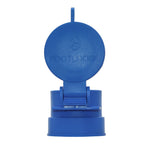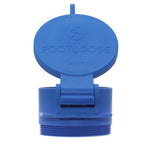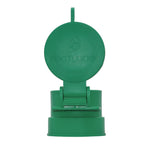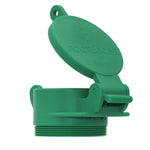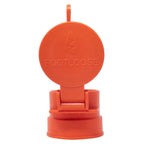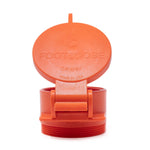You have no items in your shopping cart.
Sewer line clogs—every homeowner's worst nightmare. From backed-up sinks to stopped-up toilets, it’s a critical issue that can cause further damage if not attended to immediately. Most of us are familiar with the snake, a narrow auger designed to manually clear blockages, but there is another option on the market; hydrojet drain cleaners.
What Is Hydrojet Drain Cleaning?
Hydro jet drain cleaning is a technique that uses highly pressurized water to maximize clog removal and sewer line cleanliness and can be used in residential or commercial applications. High pressure drain cleaners are often less expensive in the long run than using cheaper, short-term solutions that lead to frequent plumbing issues as well as repeat visits from your local plumber. Unless you’re looking to get to know them on a first-name basis, the smart option may be to have your drains cleaned using the hydrojet method.
How Does Hydro Jetting Work?
The hydrojet drain cleaner consists of a large, pressurized water pump connected to a long, flexible hose that is used in the manhole or pipes. Attached to the hose are specially engineered nozzles designed to blast away dirt, grime, and grease. These nozzles enable the operator to tailor water pressure and flow to the specific application and provide enhanced cleaning capacity compared to traditional methods.
The flexible hose ensures the hydrojet can access all areas of the property’s plumbing and sewer lines. The user can adjust the water pressure from an average of 1,500 psi all the way to 5,000 psi for extremely hard-to-remove blockages. Some models also include a cold or hot water selection, which helps remove grease, fat, and oils by melting them away while flushing debris through and out of the drainage system.

Will Hydrojet Drain Cleaning Work for Me?
Hydrojet drain cleaning is typically the best option for tough, dense, and stubborn clogs. This is especially the case when you consider the potential damage caused by a burst pipe, which can cost thousands of dollars to repair.
Sewer line damage can also lead to temporary relocation from the home as the repairs are made, incurring hotel or temporary rental costs to the homeowner and tenants. Prior to hydro jetting, a small camera is used to determine the location of blockages and indicate the appropriate nozzles and water pressure selections to the user.
For commercial applications, restaurants, hotels, and various other businesses can benefit from the hydrojet drain cleaners’ extended reach and pressure. They work wonders on grease and sludge traps, flushing sediment away and maintaining optimal drainage throughout the system.
What about the snake?
When battling a tough drain clog, a plumber’s snake, also referred to as a toilet jack or drain snake, is generally the next step after the homeowner or plumber has attempted to clear the drain clog with a plunger.
There are several different snake varieties on the market, ranging from hand-cranked augers to motorized electric augers and the ever-popular Roto-Rooter, introduced in 1933 by American inventor Samuel Blanc. The auger cleans by way of a rotating tube that removes dirt and deposits from the pipe wall.
Electric and motorized versions can also partially clear tree roots and larger debris.

On the downside, they cannot remove debris as thoroughly as a hydrojet plumbing system due to the lack of water and the manual operation of the auger. This often makes the plumber’s snake a short-term quick fix instead of a long-term solution to the plumbing problem at hand. There is also the potential for damaging the pipe wall due to the rotating metal tube scratching and gouging the surface.
Hydrojetting vs. the snake
Each of the methods listed above has its inherent pros and cons. As mentioned, the snake can often lead to scratches, dings, and divots due to its propensity to bang around within the pipe, which will lead to degradation and decreased flow over the life of the drainage system. A plumber’s snake may also leave behind debris clumps, grease, and other deposits due to the mechanical action of the system and the lack of pressurized flow.
When water jetting plumbing, it is important to clean the system rather than just removing clogs. The remaining deposits tend to build up again over time, inevitably leaving the home or business owner in the exact same spot a few months or years later. The snake also lacks the power to remove troublesome clogs, such as dense tree roots.
The high pressure drain cleaner, on the other hand, thoroughly cleans the sewer line, using pressurized water to ensure all blockages, sediment, and debris are completely removed and flushed. Water jet plumbing does have the potential to damage old, broken, or
brittle pipes, but your local plumber will be able to determine their condition using a drain camera system and select the correct flow for the application.
Novice users should never attempt to use hydrojet plumbing without proper training. In the hands of a skilled plumber, this is often the most effective option and can keep your drain lines clear up to four times longer than traditional methods.
In terms of cost, the snake tends to be the less pricey option initially—until you factor in the repeated callbacks to the plumber, damage due to dinged pipes, water damage due to fixture overflows, and time lost scheduling and attending appointments. It is often more price-effective to hydrojet the sewer line.
Final Thoughts
Before determining which option is right for you, be sure to contact your local professional plumber to ensure the right tool is selected for the job. The wealth of knowledge they provide will reassure you that you are making the right decision for your property. If your plumber determines this is a viable option, hydrojet drain cleaning is often the best solution that will provide you with a clean, free-flowing, and worry-free drainage and sewage system for years to come.



